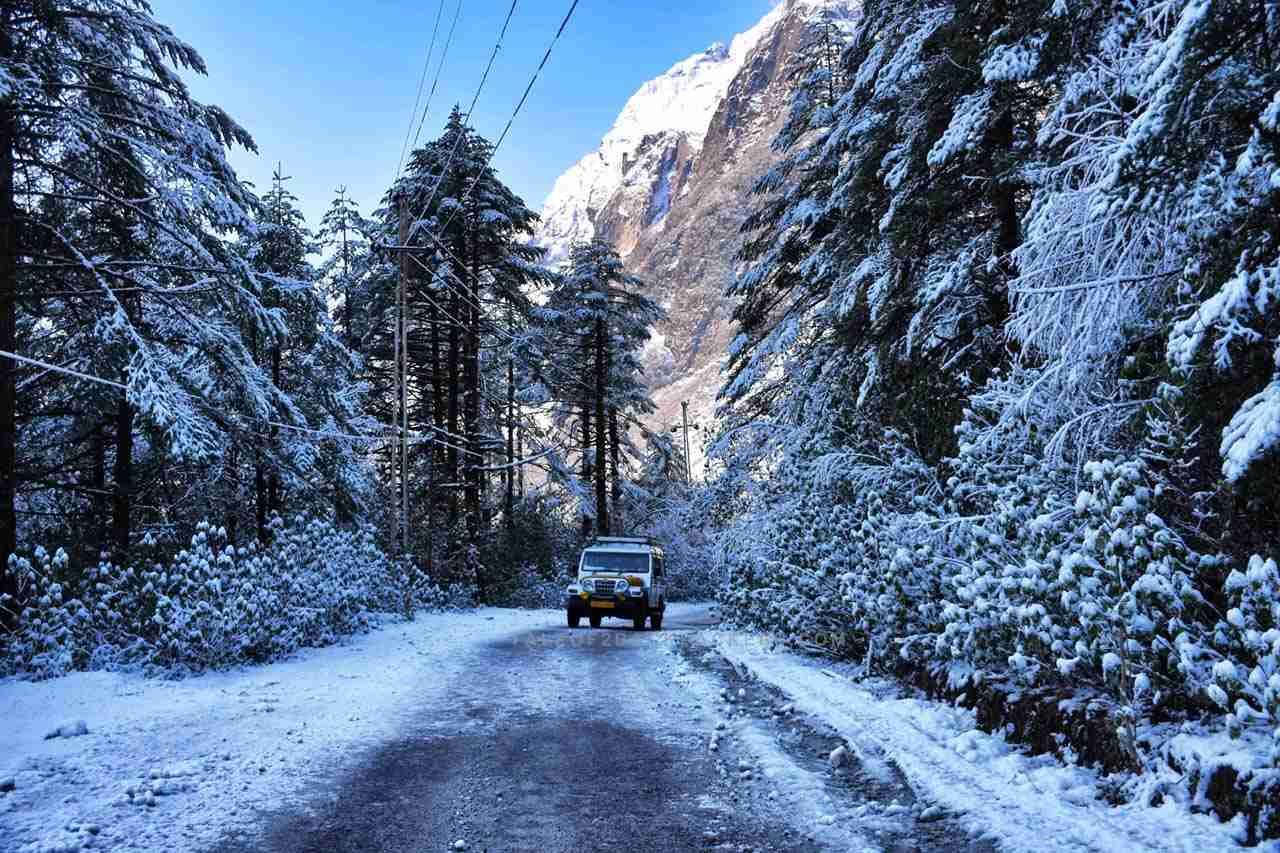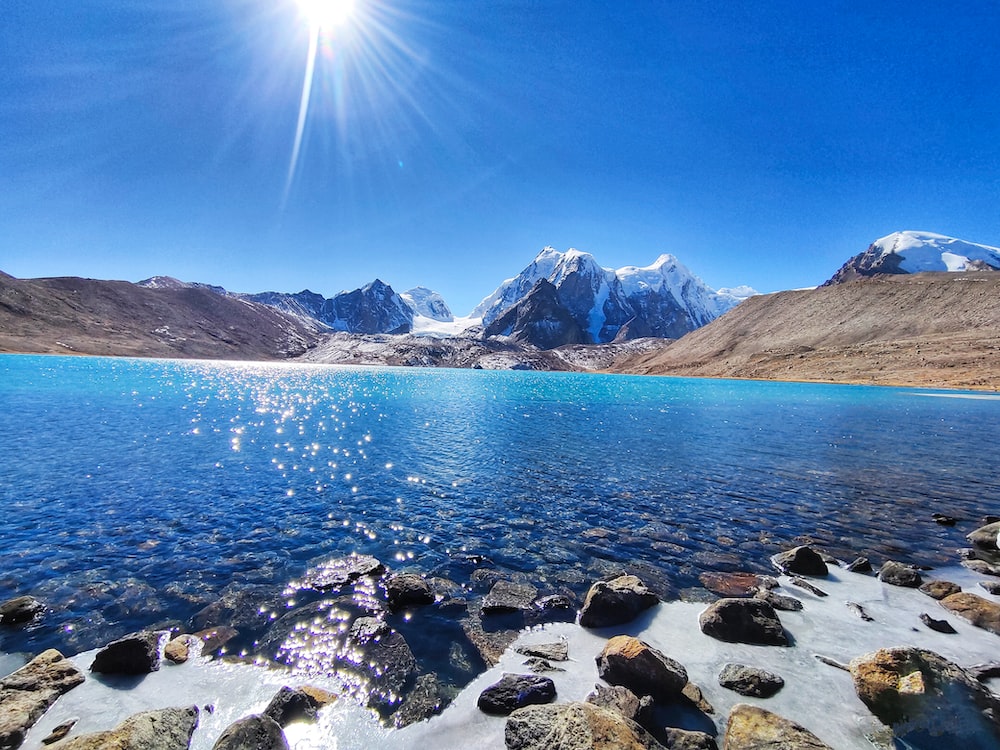Lachung is 120 kilometres away from Gangtok and rises to a height of about 8,610 feet above sea level. Tourists that intend to travel to destinations in North Sikkim, such as Yumthang Valley, Zero Point, and Katao Valley, commonly stop in the town.
How to Get to Lachung?
In order to get to this city from the North Sikkim Highway, you must take the road that passes through Phodong, Mongan, and Chungthang.
From Gangtok, it will take you 6–8 hours to go to Lachung. The amount of time largely depends on the weather and the state of the roads.
It is a good idea to contact knowledgeable travel agents like us before making travel plans to Lachung. Even though it is stunning and wonderfully lovely, it has seasonal restrictions. Due to excessive rains, the area is completely inaccessible during the monsoon.
Additionally, visiting during the winter months is challenging because important routes are closed off by the heavy snowfall.
How Does Lachung Appear?

It will take you around two hours to get from Lachen to Lachung, and even if the roads may be broken in some spots, the scenery is breathtaking. Lachung, with its abundant greenery and dreamlike atmosphere, is sometimes referred to as the tranquil green hamlet.
In this ethereal village, it appears as though time has frozen.
It is a lovely image to see. Pretty wildflowers can be found growing in groups that are seldom tended to but still flourish.
Most Beautiful Town In Sikkim
In "The Himalayan Journal," Joseph Dalton Hooker referred to Lachung as the "most picturesque village of Sikkim." It is without a doubt a place of unfathomable beauty, making it the ideal location for tranquil vacations.
Rustic vibes
Compared to Lachen, Lachung is less cold, so you can take leisurely strolls to take in the village's rural atmosphere. Lachung is home to numerous fruit orchards and glacial rivers that run through the middle of the hamlet and add to its attractiveness in addition to the wildflowers and greenery.
Lachung's clean, crisp, and chilly mountain air will revive your lungs if you've been bothered by the filthy air of busy cities. If you want to consume high-quality Tibetan food while you are in Lachung, you might ask your driver to suggest locations where you could do so.
In Lachung, there are many eateries that provide specialties like Mixed Meat Noodle Soup, also known as Thukpa.
Lachung: Monthly Weather and Temperature
Good Summers (March–June)
In Lachung, the summertime is the most pleasant season. The typical temperature range is 10 to 28 degrees Celsius, which is considered to be moderate. Typically, summer begins in the month of March and lasts through May or mid-June. Travelling during these months is very comfortable, and you can see as many tourist attractions as you can in the time allotted.
Summer is the ideal season to visit Lachung if you enjoy the vibrant scenery because rhododendrons are in bloom all over the place. Beauty will enchant you.
Monsoon Seasonal Torrential Rainfall (July-September)
It starts in July and lasts through September. The entire hamlet is experiencing tremendous rain, and many places are closed off or inaccessible. The off-season for tourists is now. Lachung does, however, continue to draw visitors during the monsoon season because some people are willing to take a chance in order to see the waterfalls at their most spectacular.
In the monsoon season, Lachung's waterfalls and Lachung Chu River both appear breathtakingly beautiful. If you do not have any outside plans and would rather stay indoors, you may still enjoy the monsoons in Lachung.
Winters are mild and majestic (October to February)

Lachung experiences long, chilly winters, but they are not as severe as those in Lachen. Winter officially starts in October and lasts until mid-February or early-March. The temperature fluctuates between -10 and -10 degrees Celsius. In the winter, the scenery is lovely.
The temperature is already chilly, and the air is often misty, crisp, and frigid from recent snowfall.

